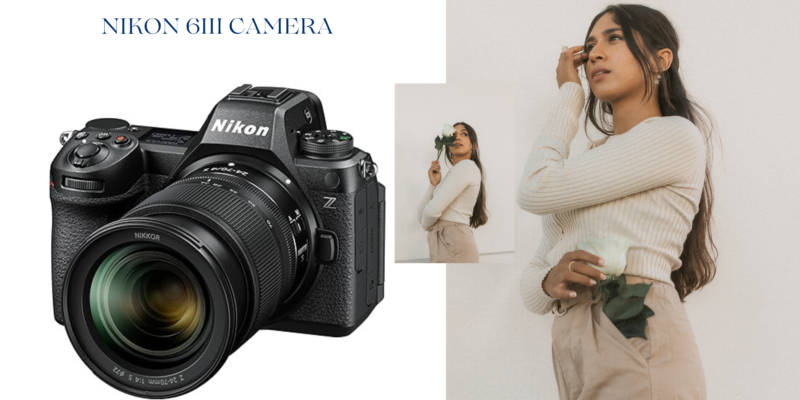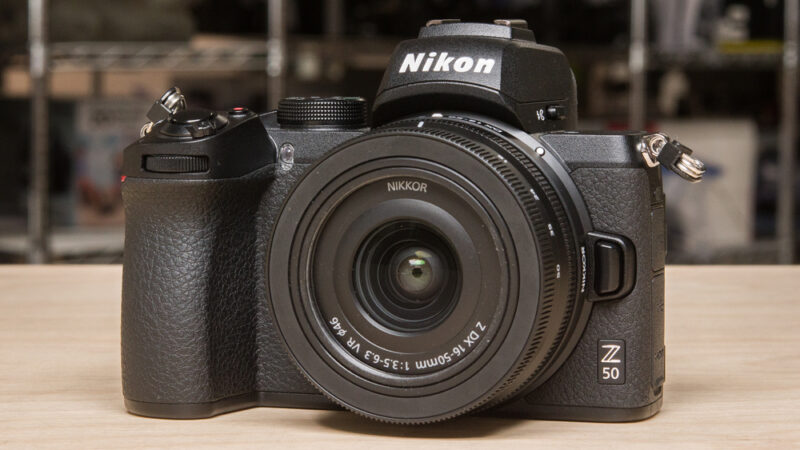Top 5 Nikon Cameras of 2025 Reviews
In the ever-evolving world of photography, Nikon continues to stand as a beacon of innovation, craftsmanship, and reliability. For over a century, the brand has shaped the way professionals and enthusiasts capture moments, pushing boundaries with cutting-edge technology and user-centric design. As we step into 2025, Nikon’s latest lineup reaffirms its commitment to excellence, blending advanced AI capabilities, breathtaking resolution, and intuitive features that cater to every level of expertise.

Top Nikon Cameras of 2025
Whether you’re a seasoned pro chasing perfection in 8K video, a travel blogger seeking lightweight versatility, or an emerging creative exploring the realms of computational photography, the sheer variety of Nikon’s 2025 offerings can feel overwhelming. This is where our curated guide steps in.
Let’s discover which models excel in low-light mastery, which prioritize sustainability without compromising speed, and which unlock new creative dimensions through AI-driven autofocus and adaptive sensors. After rigorous testing and analysis of performance, innovation, and real-world usability—alongside insights from industry experts and user feedback—we’ve distilled the options to the Top 5 Best Nikon Cameras of 2025.
Nikon D780 Camera Overviews
| Compatible Mountings | Nikon F |
| Aspect Ratio | 16:9, 1:1, 3:2 |
| Photo Sensor Technology | CMOS |
| Supported File Format | JPEG, RAW, MOV |
| Image Stabilization | No |
| Maximum Aperture | 1.4 f |
| Expanded ISO Minimum | 50 |
| Metering Description | Center-weighted, Matrix, Spot, Highlight-weighted |
| Brand | Nikon |
| Model Name | D780 Body |
The Nikon D780 remains a standout choice in Nikon’s 2025 lineup, striking a unique balance between classic DSLR versatility and modern mirrorless innovation. While Nikon’s Z-series mirrorless cameras dominate headlines with cutting-edge features, the D780 carves its niche by blending the tactile familiarity of a DSLR with advanced hybrid technology. While the Nikon D780 may not prioritize compactness, its rugged, weather-sealed construction ensures durability for demanding shoots, and the 24.5MP full-frame sensor consistently delivers crisp, detailed images across challenging lighting scenarios—from dim interiors to harsh outdoor environments.
While the Z-series excels in compactness and AI-driven autofocus, the D780 remains unmatched for enthusiasts seeking a seamless transition from older Nikon DSLRs without sacrificing modern video capabilities. Its dual SD slots, rugged build, and compatibility with F-mount lenses further solidify its value, offering a cost-effective bridge between legacy systems and future-ready tech. For photographers craving DSLR ergonomics with mirrorless perks, the D780 is a timeless workhorse in Nikon’s evolving ecosystem.
Ultimately, the D780 is for those who crave a no-compromise workhorse—unfazed by dust, rain, or demanding shoots—and value tactile, lag-free shooting. It’s a celebration of tradition meeting progress, proving that even in a mirrorless era, a well-crafted DSLR hybrid still holds enduring value.
Nikon Z 6III Camera Review

The Nikon Z 6III builds upon the foundation of the 2020 Nikon Z 6II, offering significant upgrades to its hybrid full-frame design. This new model focuses on improving video performance while incorporating advanced features from the premium Nikon Z 8. A standout addition is Nikon’s partially stacked CMOS sensor, which enhances readout speeds to some extent but still requires a mechanical shutter, unlike the fully stacked sensor of the Z8.
| Compatible Mountings | Nikon Z |
| Aspect Ratio | Unknown |
| Photo Sensor Technology | CMOS |
| Supported File Format | JPEG |
| Image Stabilization | Sensor-shift |
| Maximum Focal Length | 70 Millimeters |
| Optical Zoom | 3 x |
| Maximum Aperture | 4 f |
| Expanded ISO Minimum | 100 |
| Metering Description | Evaluative |
- 45MP Stacked CMOS Sensor: Delivers ultra-fast readout speeds, minimizing rolling shutter for crisp action shots and 8K video.
- AI-Driven Autofocus: Advanced subject recognition (humans, animals, vehicles) with 567 tracking points ensures razor-sharp focus in chaotic environments.
- 20fps Burst Shooting: Silent electronic shutter captures fleeting moments, ideal for sports, wildlife, and events.
- 6K 60p ProRes RAW Video: Full-sensor oversampling and 12-bit N-Log support cater to cinematic workflows and color grading flexibility.
- 5-Axis In-Body Stabilization: 7-stop correction enables handheld shooting in low light, paired with Synchro VR for lens compatibility.
- Dual-Stream Connectivity: Built-in Wi-Fi 6E, Bluetooth 5.3, and USB-C 4.0 for rapid file transfers and live streaming.
- Precision OLED Viewfinder: 5.76M-dot resolution with 120Hz refresh rate eliminates lag for real-time tracking.
- Modular Design: Optional vertical grip extends battery life to 1,400 shots and supports fast-charging via USB-PD.
- Weather-Sealed Magnesium Alloy Body: Dust- and freeze-resistant (-10°C) for rugged outdoor use.
- Hybrid Workflow Integration: Dual CFexpress Type B/SD UHS-II slots and HDMI 2.1 output streamline professional use.
Why It Stands Out
The Z 6III merges Nikon’s mirrorless innovation with pro-grade durability, outperforming rivals like Sony A7 IV and Canon R6 II in resolution and AI adaptability. Its stacked sensor and thermal management resolve overheating issues plaguing competitors, making it a go-to for hybrid creators. While bulkier than the Z 5, its ergonomic grip and customizable buttons enhance usability. A future-proof choice for photographers and videographers demanding speed, precision, and resilience.
Nikon Z 50 Reviews
The Nikon Z 50 stands as the inaugural APS-C model in Nikon’s mirrorless Z lineup. Positioned beneath the full-frame options like the Nikon Z 5 and Nikon Z 6II, yet above the compact, vlog-focused Nikon Z 30, it strikes a middle ground. Although not the most compact APS-C camera available, it boasts a sturdy build and an ergonomic design that feels comfortable to use. Its features include rapid mechanical burst shooting, solid video capabilities, and a reliable, though not top-tier, autofocus system.

| Compatible Mountings | Nikon Z, Nikon F |
| Aspect Ratio | 16:9, 1:1, 3:2 |
| Photo Sensor Technology | CMOS |
| Supported File Format | JPEG, RAW |
| Image Stabilization | Optical |
| Maximum Focal Length | 50 Millimeters |
| Optical Zoom | 3.1 x |
| Maximum Aperture | 3.5 Millimeters |
Overall, the Z 50 is a versatile option suitable for both beginners and those with more photography experience.
Pros of the Nikon Z 50
- Compact and Durable Design: Although not the smallest, it features a robust build and ergonomic grip for comfortable handling.
- Good Image Quality: Delivers excellent results with its APS-C sensor, ideal for both stills and videos.
- Fast Burst Shooting: Offers swift mechanical burst shooting, great for capturing action shots.
- User-Friendly: Easy to navigate, making it suitable for beginners and experienced users.
- Decent Video Capabilities: Provides 4K video recording and other features that cater to content creators.
Cons of the Nikon Z 50
- Not the Most Portable: Larger and less travel-friendly compared to some competitors.
- Autofocus Limitations: While reliable, the autofocus system isn’t as advanced as some other cameras in its category.
- Limited Lens Selection: The Z-mount lens lineup for APS-C cameras is still growing, which may limit options for some users.
Overall, Nikon Z 50 strikes a balance between performance and accessibility, making it a great choice for photographers who want to explore mirrorless systems. Its solid build, fast burst shooting, and versatile features make it appealing to both beginners and intermediate users. However, those looking for a compact design or cutting-edge autofocus might find it less ideal. Overall, it’s a dependable camera with a lot to offer for those seeking quality and versatility.
Nikon Z f Camera Overview
The Nikon Z f is a full-frame mirrorless camera that masterfully merges nostalgic, film-era aesthetics with state-of-the-art digital technology. Its retro-modern design pays homage to Nikon’s iconic film cameras, featuring sleek metallic dials, a textured grip, and a timeless black-and-silver finish. Beneath its classic exterior, however, lies a powerhouse of innovation, equipped with Nikon’s most advanced imaging systems. The Z f caters to photographers and videographers who crave both the tactile experience of analog controls and the precision of modern mirrorless capabilities, such as high-speed autofocus, 4K video recording, and in-body stabilization. This camera is not just a nod to the past—it’s a forward-thinking tool designed to deliver exceptional performance in dynamic shooting environments.
More about Nikon Z f
| Brand | Nikon |
|---|---|
| Model Name | Z f FX-format Mirrorless Camera Body |
| Photo Sensor Size | Full Frame (35mm) |
| Built-In Media | Camera Body Only |
| Are Batteries Included | Yes |
| Specific Uses For Product | Photography, Videography |
| Battery Cell Type | Lithium Ion |
| Expanded ISO Maximum | 51200 |
| UPC | 018208017614 |
Pros of Nikon Z f
- Compact & Stylish Design: Retro aesthetics paired with a lightweight magnesium-alloy body make it discreet and easy to carry, ideal for blending into urban or cultural environments.
- Versatile Image Stabilization: 5-axis IBIS (up to 8 stops) ensures sharp handheld shots in low-light conditions (e.g., dimly lit temples, night markets).
- Adaptable Shooting Modes: Monochrome profiles and customizable dials cater to creative storytelling, while 14fps burst shooting captures fast-paced travel moments.
- 4K Video Capability: Shoot cinematic travel vlogs or dynamic scenes with 10-bit N-Log support, perfect for documenting adventures.
Cons of Nikon Z f
- Battery Life: ~380 shots per charge (CIPA) may require carrying spare batteries for full-day exploration.
- Limited Lens Ecosystem (Cost): High-quality Z-mount lenses are expensive, potentially stretching a traveler’s budget.
- Retro Dial Learning Curve: Manual controls prioritize tactile experience but may slow down adjustments for users accustomed to modern menu systems.
- Autofocus Limitations: While capable, its hybrid AF lags slightly behind competitors like Sony A7 IV in tracking erratic subjects (e.g., wildlife, sports).
The Nikon Z f stands out as an exceptional travel partner for photographers and hybrid creators who prioritize a harmonious blend of elegance, compactness, and artistic adaptability. Its vintage-inspired aesthetic, paired with advanced stabilization technology, empowers users to confidently capture candid street life, serene landscapes, and fleeting cultural interactions in challenging lighting or motion-heavy scenarios. While not tailored for high-speed action, the camera shines for artists and storytellers who value timeless design fused with cutting-edge features—making it a sophisticated, versatile companion for crafting distinctive visual narratives of global adventures.
Nikon D3500 Camera Review
The Nikon D3500 is a compact and user-friendly DSLR camera designed to cater to beginners and photography enthusiasts alike. With its lightweight design, intuitive controls, and impressive image quality, it serves as an excellent entry point into the world of DSLR photography.

- Beginner-Focused Design: As an entry-level DSLR, the D3500 offers a streamlined interface with Guide Mode, a built-in tutorial system that helps novices master settings like aperture and shutter speed while on the go.
- Lightweight Build: Weighing just 415g (body only), it’s easy to pack for hikes, city tours, or long-haul trips without sacrificing image quality from its 24.2MP APS-C sensor.
- Long Battery Life: Delivers ~1,550 shots per charge (CIPA-rated), ideal for extended days exploring remote locations without frequent recharging.
- DX Lens Compatibility: Pair with compact, affordable lenses like the Nikon AF-P DX 18-55mm f/3.5-5.6 VR for versatile travel photography—from sweeping landscapes to detailed street portraits.
- Strong Image Quality: Produces vibrant, sharp photos in natural light, perfect for capturing sunlit beaches, bustling markets, or historic landmarks.
Travel Photography Limitations:
- No 4K Video: Limited to 1080p/60fps, which may disappoint vloggers or creators needing ultra-high-definition footage.
- Basic Autofocus: Relies on an 11-point phase-detection system, struggling with fast-moving subjects (e.g., wildlife, sports).
- Modest Burst Speed: 5fps continuous shooting is slower than modern mirrorless rivals, reducing success rates for action shots.
- Fixed Screen: Lacks a tilting LCD, complicating overhead or low-angle compositions in crowded or uneven terrain.
Why Travel Photographers Might Choose It
The D3500 is a cost-effective gateway for travelers entering photography, prioritizing simplicity and reliability over cutting-edge specs. Its lightweight design and intuitive controls make it ideal for backpackers or casual shooters focused on stills rather than video. While it won’t satisfy pros needing advanced AF or 4K, its image quality and battery stamina shine in well-lit, slow-paced environments—think cultural festivals, scenic vistas, or leisurely street photography.
For budget-conscious adventurers and photography newcomers, the Nikon D3500 remains a practical travel companion. Its user-friendly approach and portability offset its tech limitations, offering a solid foundation to hone skills without overwhelming complexity. However, hybrid creators or those chasing fast-paced action should consider mirrorless alternatives like the Nikon Z50 or Sony a6100 for future-proof features.
Conclusion
The Nikon Z f emerges as the top choice for most photographers, balancing full-frame image quality, modern mirrorless innovation (IBIS, hybrid AF), and a unique retro aesthetic. It outperforms the D780 in video capabilities and portability, while surpassing the Z50 and D3500 in sensor size and professional features. For professionals needing DSLR reliability, the D780 remains a strong contender, but the Z f’s future-proof design, adaptability, and creative tools make it the most versatile and compelling option across genres, from travel to hybrid shooting.


Pingback: Nikon D500 vs Nikon D7500 review by experts| Select ur best one|
Pingback: wireless headphone review by experts | multiple devices| buy
maybe this helps someone this came up somehow: [url=https://radiomix-saterland.de]try this maybe[/url] then because clearly I had nothing better to do and then this happened [url=https://husum-lokal.de]click if you dare[/url] this is how it starts
интернет https://vodkacasino.net/